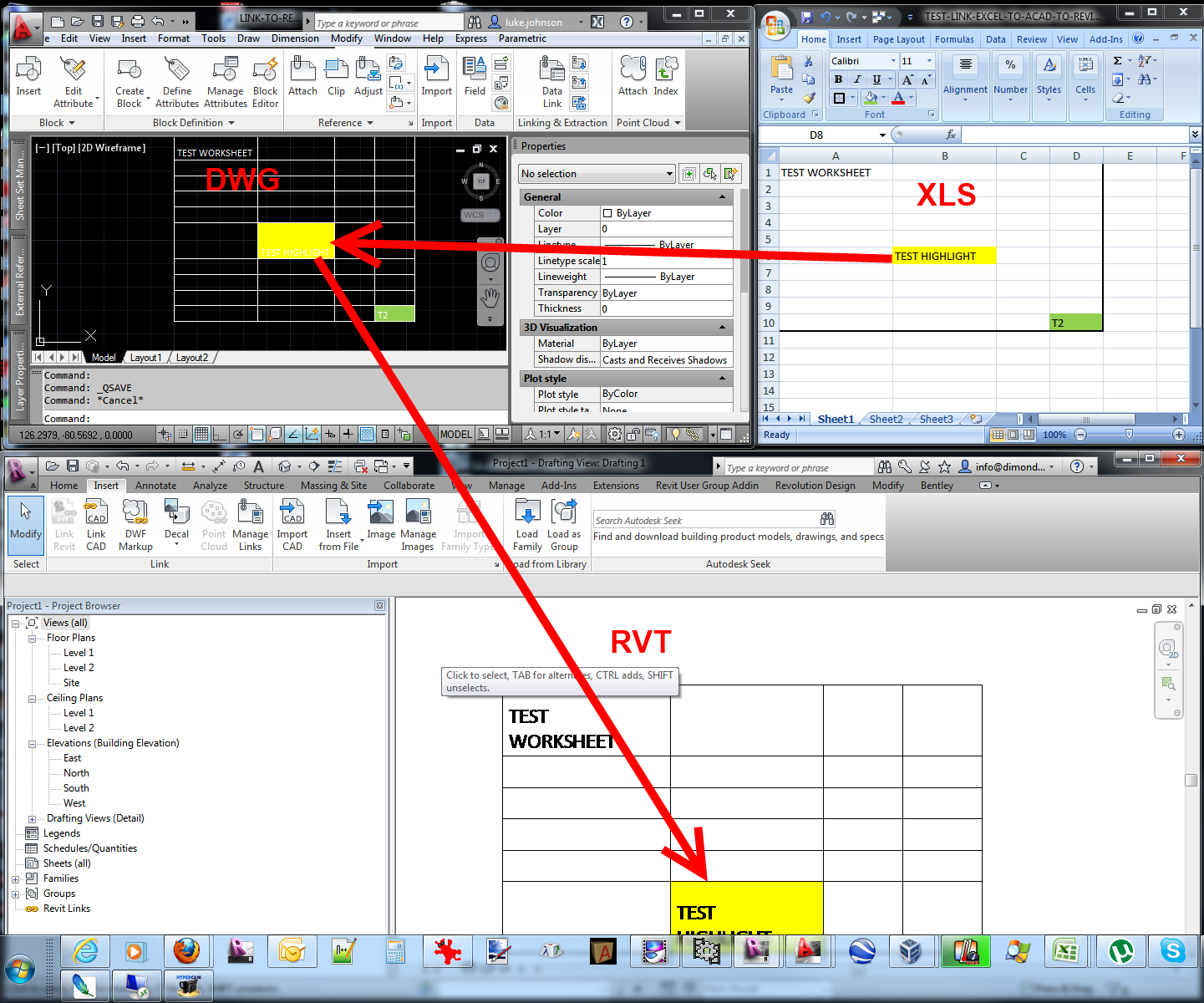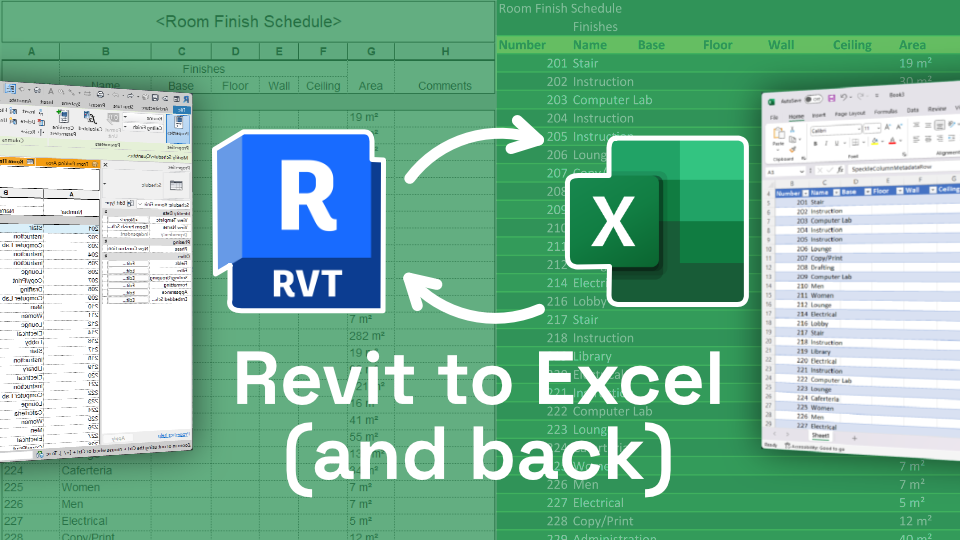Enhance Your Workflow with Revit Add Ins and Plugins
Wiki Article
Excel Empowerment: Supercharge Your Revit Projects With Seamless Information Import
With seamless information import, Excel empowerment can be the trick to unlocking your job's complete potential. Think of improving the import process and optimizing performance through seamless information combination. In this post, we will certainly share ideas and techniques for using Excel in your Revit projects.The Power of Master Revit Projects
You can supercharge your Revit projects by using the power of Excel for seamless information import. Excel is a functional device that can substantially improve your workflow and performance in Revit (import excel into revit). With Excel, you can conveniently import and manage large amounts of data, conserving you effort and timeOne of the essential advantages of using Excel in Revit is its capability to handle complex computations and formulas. You can use Excel to carry out calculations on your information, such as creating amounts, computing expenses, or evaluating efficiency. When functioning with big tasks that require comprehensive estimations., this can be especially helpful.

Furthermore, Excel provides a acquainted and easy to use user interface for functioning with information. You can organize and manipulate your information in a spread sheet layout, making it easy to see and edit. This can be specifically helpful when teaming up with others or when you need to make quick adjustments to your project information.
Moreover, Excel permits you to conveniently import and export data in between Revit and other software applications. You can import data from outside resources right into Revit, such as product specifications or equipment routines, and export data from Revit to Excel for additional evaluation or coverage.
Streamlining Data Import With Excel in Revit
Improving data import in Revit ends up being much easier when making use of Excel as a device. With Excel, you have the power to seamlessly import and manage huge quantities of information in your Revit tasks. By using the familiar interface and functionality of Excel, you can conserve time and rise performance in your operations.Among the crucial advantages of using Excel for data import in Revit is the ability to easily arrange and adjust information before importing it into your task. With Excel's powerful attributes, such as sorting, filtering, and solutions, you can promptly tidy up and format your data to meet the needs of your Revit job.
Additionally, Excel allows you to import information from different sources, such as data sources, spread sheets, and even online applications. This adaptability provides you the freedom to gather information from different platforms and consolidate it right into one central location for easy accessibility and administration.
In addition, Excel gives the choice to create custom-made themes for data import in Revit. By developing themes customized to your job's specific requirements, you can ensure uniformity and precision in your data import procedure.
General, making use of Excel as a device for data import in Revit streamlines the process and boosts your efficiency. So why not benefit from this powerful device and supercharge your Revit jobs with smooth information import making use of Excel?
Making Best Use Of Efficiency With Seamless Information Assimilation
Make best use of performance by perfectly incorporating and handling information in your process. Gone are the days of manually inputting data right into your system, throwing away valuable time and resources. With seamless data integration, you can enhance your processes and supercharge your productivity.
When you have a smooth assimilation system in area,Handling data comes to be a breeze. You can easily organize and categorize your information, making it simpler to retrieve and examine. Bid farewell to the days of looking via unlimited spread sheets for that one item of information you need.

Excel Tips and Techniques for Revit Projects
With these methods and tips, you'll have the ability to efficiently manage your Revit projects making use of Excel. One of the initial things you can do is to utilize Excel's effective sorting and filtering functions. This will certainly enable you to quickly arrange and assess your project data. You can arrange elements by their names or filter them based on particular standards, such as their status or place. An additional useful feature is the capability to produce solutions in Excel. You can make use of formulas to determine amounts, execute complex calculations, and even automate specific tasks. This can conserve you a great deal of time and effort in your Revit projects. Additionally, you can utilize Excel to produce personalized layouts for data import and export. This way, you can guarantee consistency and accuracy when transferring data between Revit and Excel. Don't fail to remember about Excel's conditional formatting attribute. You can utilize this to highlight particular components or worths based upon certain problems. This can aid you promptly identify and address any concerns or useful site abnormalities in your task data. In general, grasping these Excel tricks and tips will significantly enhance your ability to take care of and adjust information in your Revit jobs.Harnessing the Excel-Revit Link for Success
To maximize your Excel-Revit connection, capitalize on the capacity to effortlessly integrate and move project information. By using this powerful link, you can supercharge your Revit jobs and streamline your operations. With just a couple of easy steps, you can import information from Excel directly into Revit, conserving you time and making sure accuracy.One of the essential advantages of the Excel-Revit connection is the ability to move data seamlessly. Whether you are importing routines, room data, or perhaps geometry information, Excel supplies an user-friendly user interface that permits you to arrange and adjust your data before importing it right into Revit. This means you can quickly upgrade and modify your job info in Excel, and with a couple of clicks, transfer those adjustments straight into your Revit design.
Along with transferring data, the Excel-Revit link also enables for synchronization. This suggests that any modifications made in Excel can be instantly upgraded in Revit, guaranteeing that your task information is always as much as day. This synchronization feature is especially beneficial when managing large and complicated projects, as it eliminates the need for hands-on data access and decreases the danger of mistakes.
Verdict
By simplifying information import and taking full advantage of effectiveness with seamless data assimilation, you can supercharge your tasks and accomplish success. Don't wait any longer, begin using the power of a knockout post Excel in your Revit jobs today and unlock a world of opportunities.You can supercharge your Revit tasks by taking advantage of the power of Excel for seamless information import. With Excel, you have the power to flawlessly import and handle large quantities of data in your Revit projects (revit plugins). Overall, understanding these Excel methods and ideas will significantly boost your capability important site to take care of and adjust information in your Revit projects
Whether you are importing timetables, space data, or also geometry information, Excel gives an easy to use interface that permits you to organize and adjust your data prior to importing it into Revit. By simplifying data import and making the most of efficiency with smooth data assimilation, you can supercharge your projects and attain success.
Report this wiki page